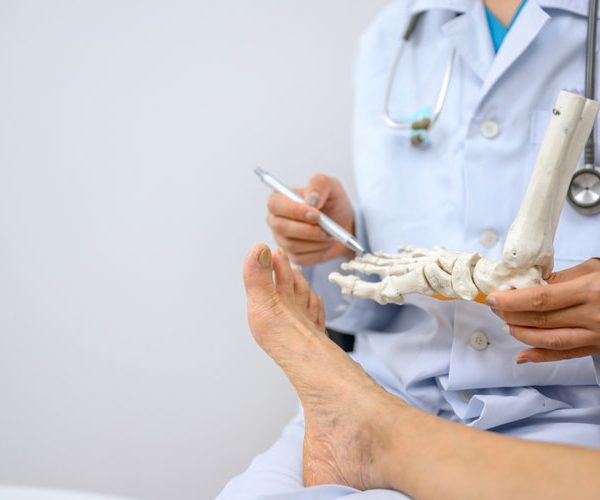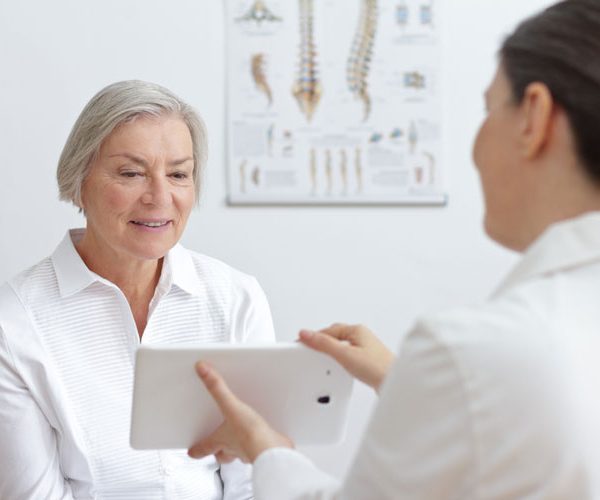Consider Patients’ Unique Experiences and Perspectives When Advocating for Osteoporosis Diagnosis, Treatment and Care
Globally, more than one in three women aged 50+ will experience an osteoporotic fracture.[i] In addition to facing low bone mass and deterioration of bone tissue; diminished quality of life, reduced mobility and loss of autonomy are grim prospects for people living with osteoporosis.[ii] For these reasons, clinicians have an essential responsibility to communicate information about the importance of diagnosis, treatment and care as successfully as possible in order to increase the likelihood of adherence to the recommended course of action.
When advocating for screening or diagnostic tests, or when discussing treatment options, it’s effective to frame the discussion around each patient’s beliefs, values and preferences. And thus, engaging in a frank conversation about what’s important to the patient goes a long way towards creating an environment that supports successful knowledge transfer and shared decision making.
While studying the importance of patient engagement in clinical guideline development, researchers learned what participants considered essential information for developing recommendations about osteoporosis management. The study found that “participants considered it critical to have recommendations on physical activity and exercise (74%), fall prevention (69%), nutrition (68%), and initial bone mineral density testing (67%). In addition to preventing fractures, over 75% of respondents stated that consideration of preserving quality of life and ability to perform daily activities, preventing admission to long-term care and fracture-related death, and avoiding serious harms from medications were essential outcomes to consider.” [iii]
It’s also important to understand whether the patient has an accurate perception of risk, an important factor for treatment adherence. Provider messages about fracture risk tend to be confusing for patients.[iv] To increase patients’ understanding of risk and benefits of recommended treatment, clinicians may find it helpful to introduce tools, such as the Bone Health Choice Decision Aid developed by the Mayo Clinic to assist with decision making (https://osteoporosisdecisionaid.mayoclinic.org/index.php/site/index).
The value of patient engagement in increasing adherence to clinician recommendations cannot be overstated. To increase the likelihood of compliance, take the time to understand patient preferences, facilitate their understanding of risks and benefits of treatment, create an environment for shared decision making and frame recommendations around the factors that are most important to each individual.
[i] Leslie WD, Schousboe JT. A review of osteoporosis diagnosis and treatment options in new and recently updated guidelines on case finding around the world. Curr Osteoporos Rep. 2011;9(3):129–140. doi: 10.1007/s11914-011-0060-5.
[ii] Compston JE, McClung MR, Leslie WD. Osteoporosis. Lancet. 2019;393(10169):364–376. doi: 10.1016/s0140-6736(18)32112-3.
[iii] S. N. Morin, M. Djekic-Ivankovic, L. Funnell, L. Giangregorio, I. B. Rodrigues, R. Ridout, S. Feldman, S. Kim, H. McDonald-Blumer, G. Kline, W. E. Ward, N. Santesso, W. D. Leslie. Patient engagement in clinical guidelines development: input from > 1000 members of the Canadian Osteoporosis Patient Network. Osteoporos Int. 2020; 31(5): 867–874. Published online 2019 Dec 14. doi: 10.1007/s00198-019-05248-4
[iv] Conley RB, Adib G, Adler RA, Akesson KE, Alexander IM, Amenta KC, Blank RD, Brox WT, Carmody EE, Chapman-Novakofski K, Clarke BL, Cody KM, Cooper C, Crandall CJ, Dirschl DR, Eagen TJ, Elderkin AL, Fujita M, Greenspan SL, Halbout P, Hochberg MC, Javaid M, Jeray KJ, Kearns AE, King T, Koinis TF, Koontz JS, Kuzma M, Lindsey C, Lorentzon M, Lyritis GP, Michaud LB, Miciano A, Morin SN, Mujahid N, Napoli N, Olenginski TP, Puzas JE, Rizou S, Rosen CJ, Saag K, Thompson E, Tosi LL, Tracer H, Khosla S, Kiel D (2019) Secondary fracture prevention: consensus clinical recommendations from a multistakeholder coalition. J Bone Miner Res. 10.1002/jbmr.3877









